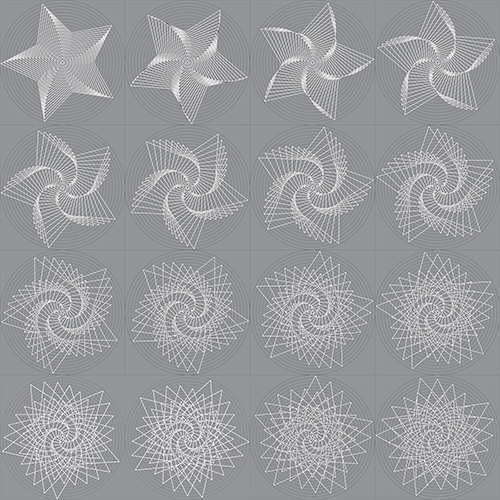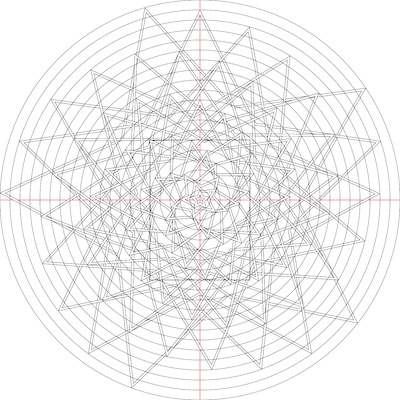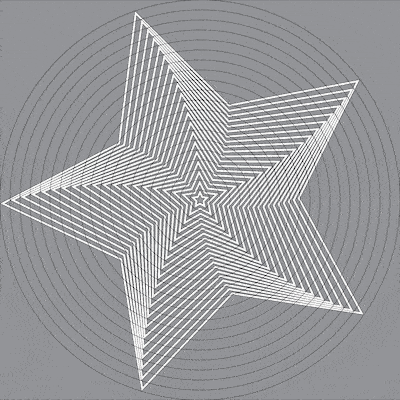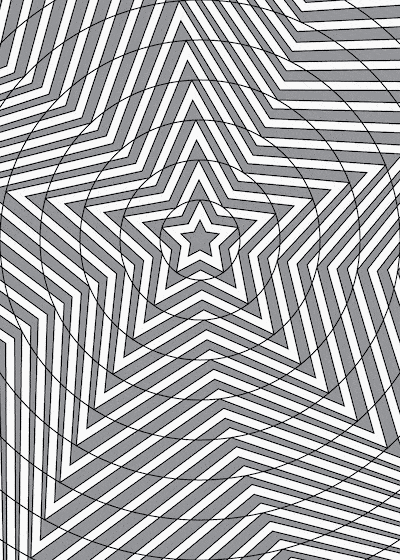A visual theme emerged organically while creating greeting cards for 2023. All the designs feature overlapping spirals of five-pointed stars, which I’ve dubbed “tanglestars.”
Once I realized that I’d be producing a series of tanglestars, I decided to create a sampler set showcasing different rotations. I could tell that interesting ripples would emerge as the stars twirl and overlap — but needed to understand the possible results in practice, not just theory.
Key measurements: The outline of the card is 5″ wide by 7″ tall. The stars share a center point, located 4″ up from the bottom of the card. Each star is comprised of both an interior and exterior outline. Each exterior outline is bounded by a circle. There are 20 circles (and stars), with outer radiuses that range from .5″ to 10″ in half-inch increments. The distance from a star’s center to its tips is exactly twice the distance from the center to its elbows. Vertices of a star’s interior outline are all placed .25″ inward from the matching exterior vertices. Neither interior nor exterior elbow vertices coincide with circles.
My initial series of rotation tests were saved as bare-bones Adobe Illustrator files. Reviewing them for this blog post, I was struck again by a desire to see these tanglestar samples animated. So I’ve revisited the images and made changes. I’ve added a gray background for contrast, and compiled them into an animated GIF.
The GIF was created using an old but powerful command-line app called ImageMagick. I further compressed it using the FreeConvert website. Unlike film or TV, animated GIFs measure frame rates in centiseconds. I’ve set the time delay between frames in this GIF to 15 centiseconds.
There’s still a chance that I may wind up doing more with the tanglestar concept, so I’m embedding a gallery of my sampler images below, for future reference.
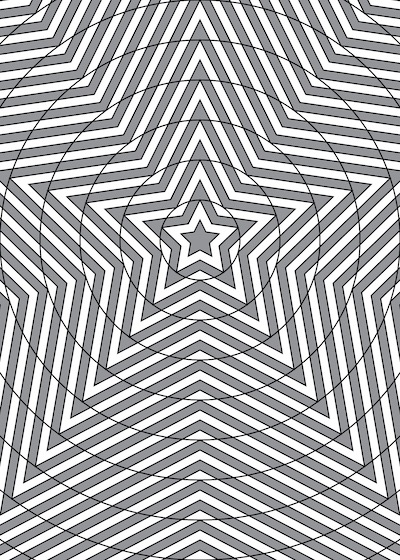
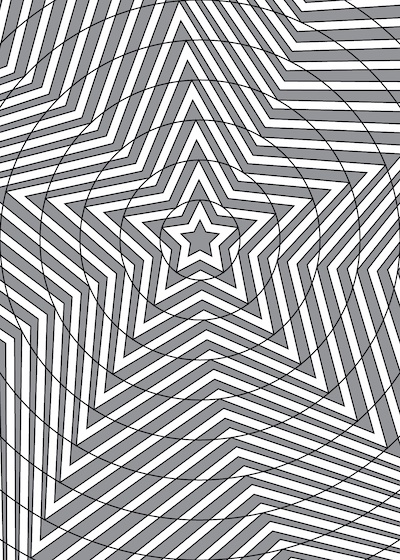
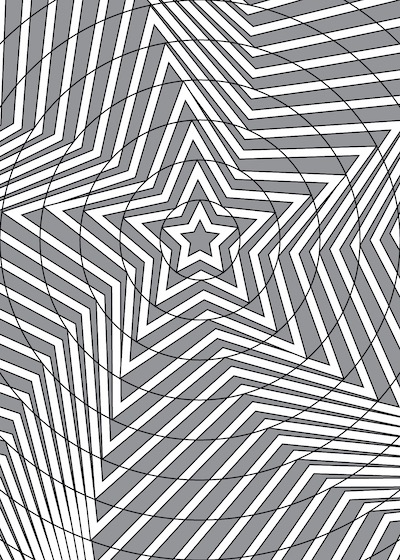
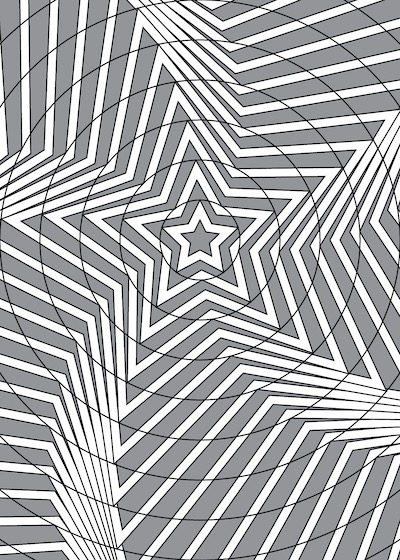
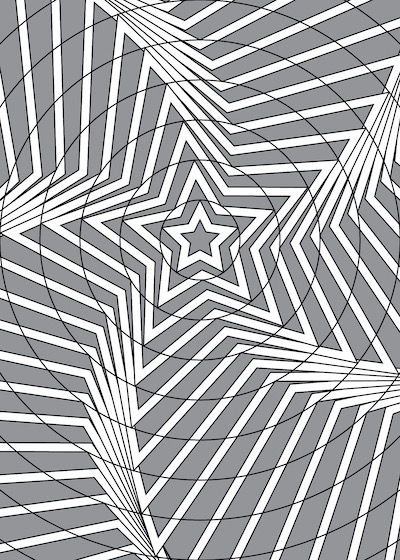
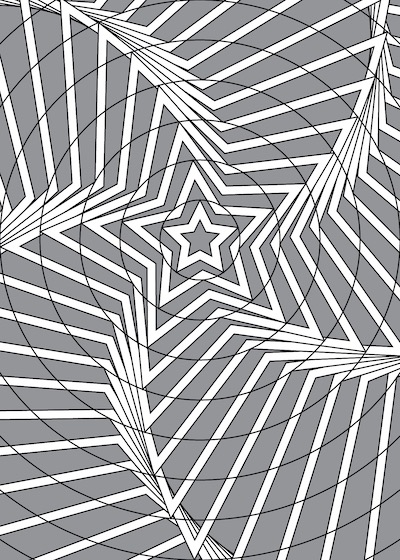
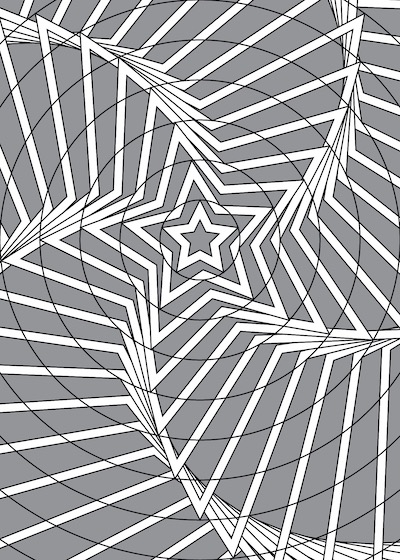
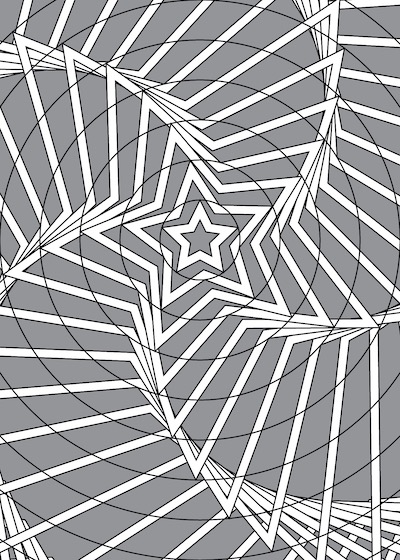
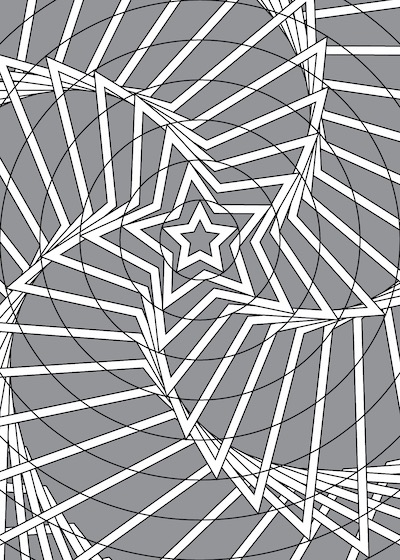
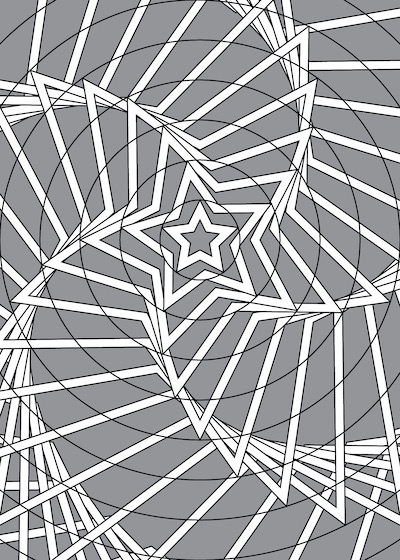
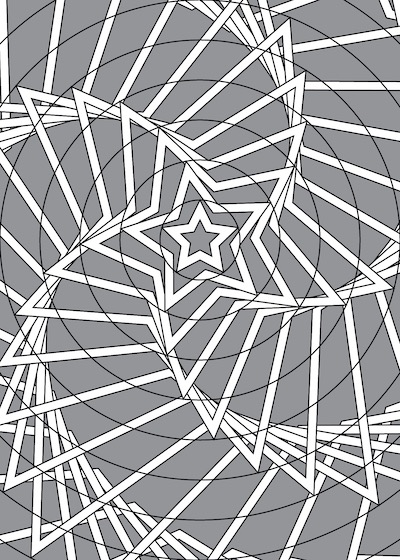
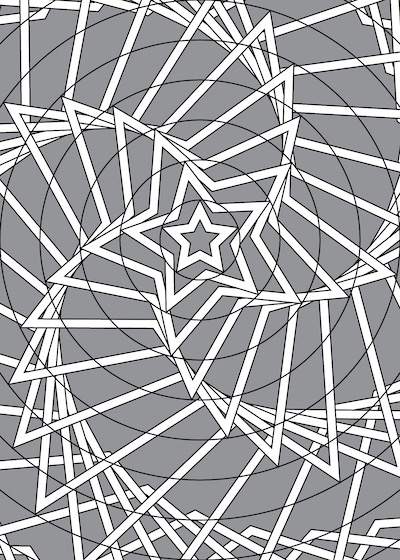
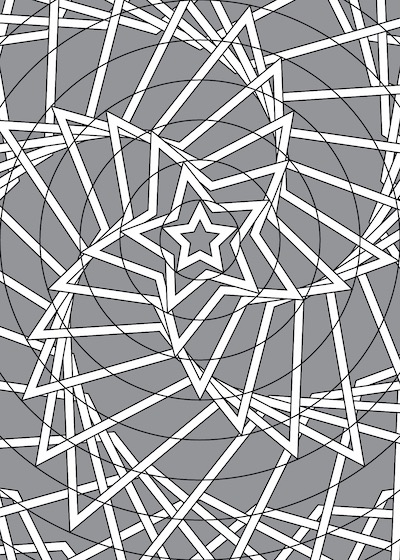
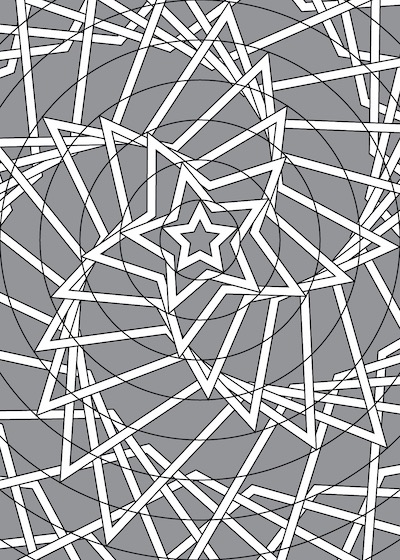
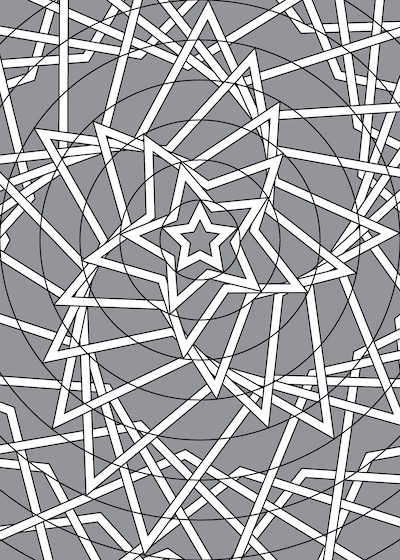
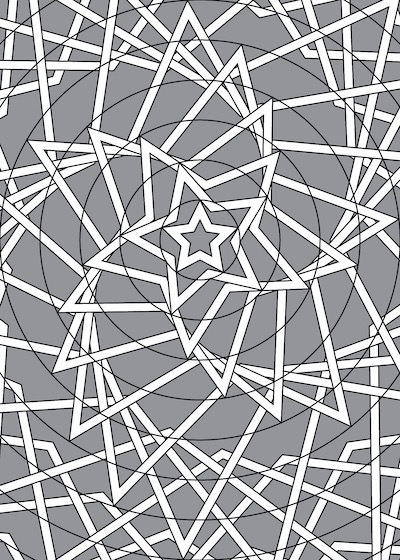
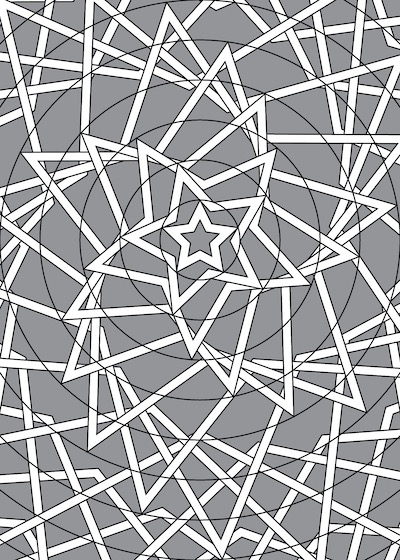
Why did I stop at 16 degrees? Due to the way I constructed these shapes, I had to adjust the rotation for every individual star one at a time. With the zero-degree version as my default, and the centermost star remaining fixed, that’s 304 stars that needed to be turned. Patient, methodical work suits me — but you’ve got to draw the line somewhere!

